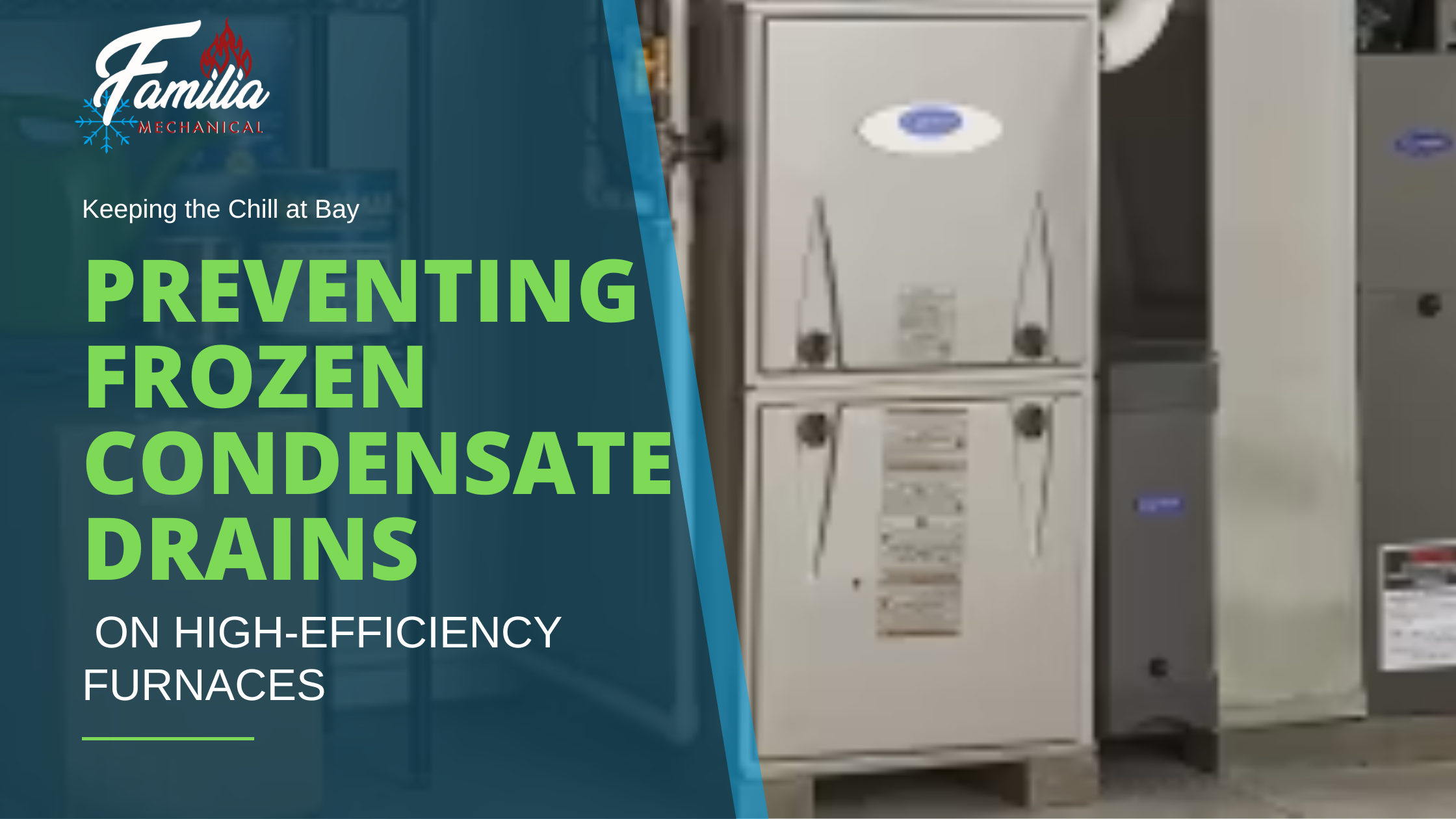Keeping the Chill at Bay: Preventing Frozen Condensate Drains on High-Efficiency Furnaces
Picture this: a freezing winter morning, your high-efficiency furnace is working diligently to keep your home warm, and suddenly, disaster strikes! A frozen condensate drain decides to make an unwelcome appearance, turning your cozy haven into a chilly nightmare. But fear not, for we're here to arm you with knowledge on how to prevent this icy predicament and maintain the efficiency of your furnace.
Understanding the Culprit: Condensate Drains
Before we dive into prevention, let's understand the problem. High-efficiency furnaces, those efficient wonders that save you money and energy, produce condensate as a byproduct. This condensate is acidic and needs to be drained away to prevent damage to your furnace and home. Unfortunately, during colder weather, this water can freeze in the drain line, causing blockages and potential furnace shutdowns.
1. Keep the Area Warm
Prevention starts with ensuring the area around the condensate drain remains warm. If the drain pipe is located in a cold area, the chances of freezing increase. Consider insulating the pipe or adding heat tape to prevent freezing. This small investment can save you from big headaches.
2. Regular Maintenance
Just like a well-oiled machine, your furnace needs regular check-ups. Schedule annual maintenance with a professional technician who can inspect your condensate drain system, clean it, and ensure it's properly functioning. This preventive measure can nip potential issues in the bud.
3. Mind the Ventilation
Proper ventilation around the condensate drain can help prevent freezing. Make sure the area is well-ventilated and not obstructed by debris, snow, or ice. A clear path for the condensate to flow can significantly reduce the risk of freezing.
4. Drain Line Slope
If the drain line slopes upward instead of downward, condensate can accumulate and freeze. Ensure that the drain line has the right slope to allow gravity to guide the water away from the furnace. If in doubt, consult a professional to correct the slope.
5. Use Condensate Drain Antifreeze
Just as you use antifreeze for your car, you can use condensate drain antifreeze for your furnace. This solution lowers the freezing point of the condensate, reducing the risk of freezing. However, make sure to use a product specifically designed for HVAC systems.
6. Heating Cable
If you're in a region with particularly harsh winters, consider installing a heating cable on the condensate drain line. This cable warms the pipe, preventing condensate from freezing even in the coldest of temperatures.
7. Smart Thermostat Settings
Adjust your smart thermostat settings to keep a consistent temperature in your home, even when you're away. Fluctuations in temperature can increase the chances of condensate freezing.
As the cold season approaches, it's crucial to be proactive in preventing frozen condensate drains on your high-efficiency furnace. By implementing these preventive measures, you can ensure that your furnace operates smoothly, keeping you warm and cozy without any unwelcome surprises. Remember, a little maintenance and planning go a long way in maintaining the efficiency and reliability of your HVAC system. Stay warm, stay smart, and bid adieu to frozen condensate drain troubles!

